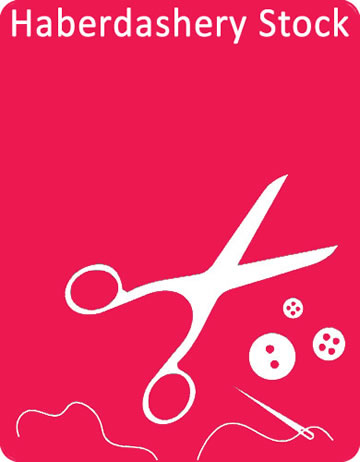We use cookies to make your experience better. To comply with the new e-Privacy directive, we need to ask for your consent to set the cookies. Learn more.
Explain to me about the types of overlock stitches
5-THREAD OVERLOCK:
A 5-thread stitch is ideal for sewing and finishing woven fabrics. It is the industry standard. It consists of a straight seam (chain stitch seam) and 3-thread overcast stitch. A 3- or 4-thread overcast can be used on most woven fabrics, but several types of fabrics tear away from these stitches, especially if the seam is under strain or the fabric is loosely woven. The 5-thread double chain stitch is a stronger seam than the 3- or 4-thread overcast. Because the 5-thread overlock combines a chain stitch with a finishing stitch over the edge, it is also a safety stitch.
4-THREAD OVERLOCK:
A 4-thread overlock is used for sewing seams and many other speciality techniques. The 4-thread seam is very secure for most sewing and has a safety stitch running down the middle of the overcast.
3-THREAD OVERLOCK:
A 3-thread overlock can be done both as a wide and narrow stitch. The 3-thread overlock is used for seams on knits, or when there will not be a lot of stress on a seam. It is also used for decorative techniques, blind hemming, narrow and rolled edges.
2-THREAD TECHNIQUES:
The primary advantage with a 2-thread stitch is to provide a lighter finish or stitch. There are several stitches that can be done with a 2-thread setting including a 2-thread fladock, 2-thread rolled edge, and a 2-thread overlock. The 2-thread ovedock or seam finish can be used to finish an edge before you sew with a straight stitch.
ROLLED EDGE:
The rolled edge can be done with two or three threads. A 2-thread rolled edge uses less thread and results in a softer, finer finish for lightweight and sheer fabrics. A rolled edge can be used as a seam in very lightweight fabrics where the seam allowance may show through to the right side. The rolled edge can be used to finish tablecloths, napkins, or home dec projects. It can also be used as a hem for lightweight garments or scarves. Decorative edges can be achieved by placing decorative thread in die loopers. Sewing over a strand of yarn with decorative threads creates a beautiful braid that can be used to embellish crafts or garments.
FLATLOCK:
The fladock can be sewn with two or three threads. It can be a decorative stitch. Specialty thread in the upper looper is used to show the fladock side of this stitch. Decorative thread in the needle is used to show the ladder side of the stitch
3 mm AND 6 mm COVERSTITCH:
A coverstitch is used for a truly professional hem on knits, lingerie, and active wear. It is also used as a decorative topstitch. The greatest advantage with the coverstitch is its elasticity on knits and other stretchy fabrics.
TRIPLE COVERSTITCH:
The triple coverstitch uses all three front needles and the chain stitch looper to provide the greatest elasticity of all the ovedock stitches. This stitch is also used as a decorative hem or topstitch.
CHAINSTITCH:
The chainstitch is not stretchy, but has more give than a standard straight stitch making it an excellent alternative seam stitch for fabric that tends to pucker. The speed of the overlock machine and this stitch are very beneficial for the many long straight seams in home decor sewing. A 2-thread chain stitch will stabilize seams in loosely woven fabrics and knits. It can also be used to fit a garment. Release the chain stitch to remove the stitching quickly, decorative threads may be put in the chain stitch looper for a decorative chain stitch. Silk buttonhole twist, rayon, and fine metallic threads work well for this. Quilting fabric from the wrong side with a decorative chain stitch works nicely and provides a pretty accent.










